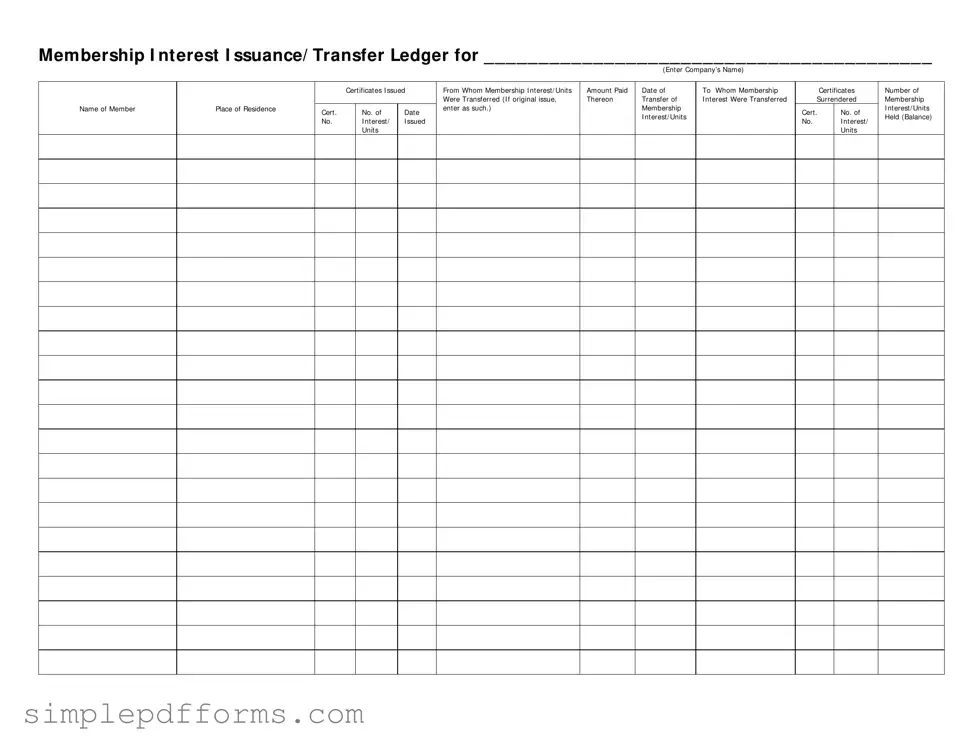Filling out the Membership Ledger form might seem straightforward, but many individuals make common mistakes that can lead to confusion or delays. One frequent error is failing to enter the company’s name correctly. This is crucial, as the entire document revolves around the specific entity involved. A misspelled name can create significant issues, including legal complications down the line.
Another mistake occurs when individuals neglect to specify the certificates issued. This section is vital for tracking ownership and ensuring that all transactions are accurately recorded. Omitting this information can lead to discrepancies and potential disputes among members.
People often overlook the importance of including the amount paid for each membership interest or unit. This detail is essential for maintaining clear financial records. Without it, the ledger may not reflect the true value of the membership interests, leading to misunderstandings about ownership stakes.
Additionally, some individuals fail to accurately record the date of transfer. This oversight can complicate matters, especially if there are questions about when ownership changed hands. Keeping precise records helps maintain transparency and trust among members.
Another common issue is not indicating the name of the member from whom the membership interest was transferred. This information is critical for establishing a clear chain of ownership. Without it, the ledger may lack clarity, making it difficult to resolve any future disputes.
People sometimes make the mistake of failing to include the place of residence of the member. This detail helps in identifying and contacting members when necessary. It also adds an extra layer of verification to the ledger, ensuring that all information is complete and accurate.
Moreover, individuals often forget to list the certificate numbers of the surrendered interests. This is a key piece of information for tracking which certificates have been returned and which remain active. Omitting this can lead to confusion and potential mismanagement of membership interests.
Lastly, many people do not accurately report the number of membership interests or units held after transfers. This balance is crucial for understanding each member's stake in the company. Inaccurate reporting can lead to financial discrepancies and potential conflicts among members.

